Twenty years later, how has the 'Moneyball' draft philosophy aged?
Over and over the old scouts will say, "The guy has a great body," or, "This guy may be the best body in the draft." And every time they do, Billy will say, "We’re not selling jeans here," and deposit yet another highly touted player, beloved by the scouts, onto his shit list. One after another of the players the scouts rated highly vanish from the white board, until it’s empty. If the Oakland A’s aren’t going to use their seven first-round draft picks to take the players their scouts loved, who on earth are they going to take? That question begins to be answered when Billy Beane, after tossing another name on the slag heap, inserts a new one:
TEAHEN
The older scouts lean back in their chairs, spittoons in hand. Paul leans forward into a laptop and quietly pulls up statistics from college Web sites. Erik Kubota, scouting director, holds a ranked list of all the amateur baseball players in the country. He turns many pages, and passes hundreds and hundreds of names, before he finds Teahen.
- Page 31 of "Moneyball" by Michael Lewis
In the film "Moneyball," Brad Pitt starred as Billy Beane, Philip Seymour Hoffman played Art Howe, Chris Pratt was cast as Scott Hatteberg, and Jonah Hill played a fictional character, Peter Brand, who represented Paul DePodesta's role with the Oakland A's.
But no actor played Nick Swisher, Joe Blanton, or Mark Teahen, players selected in the "Moneyball" draft. Their names do not appear in the movie script.
"We all knew it when Brad Pitt was gonna play Billy Beane," said Swisher, the A's first pick that year, to The Guardian. "We knew we were out. It wasn't gonna be us."
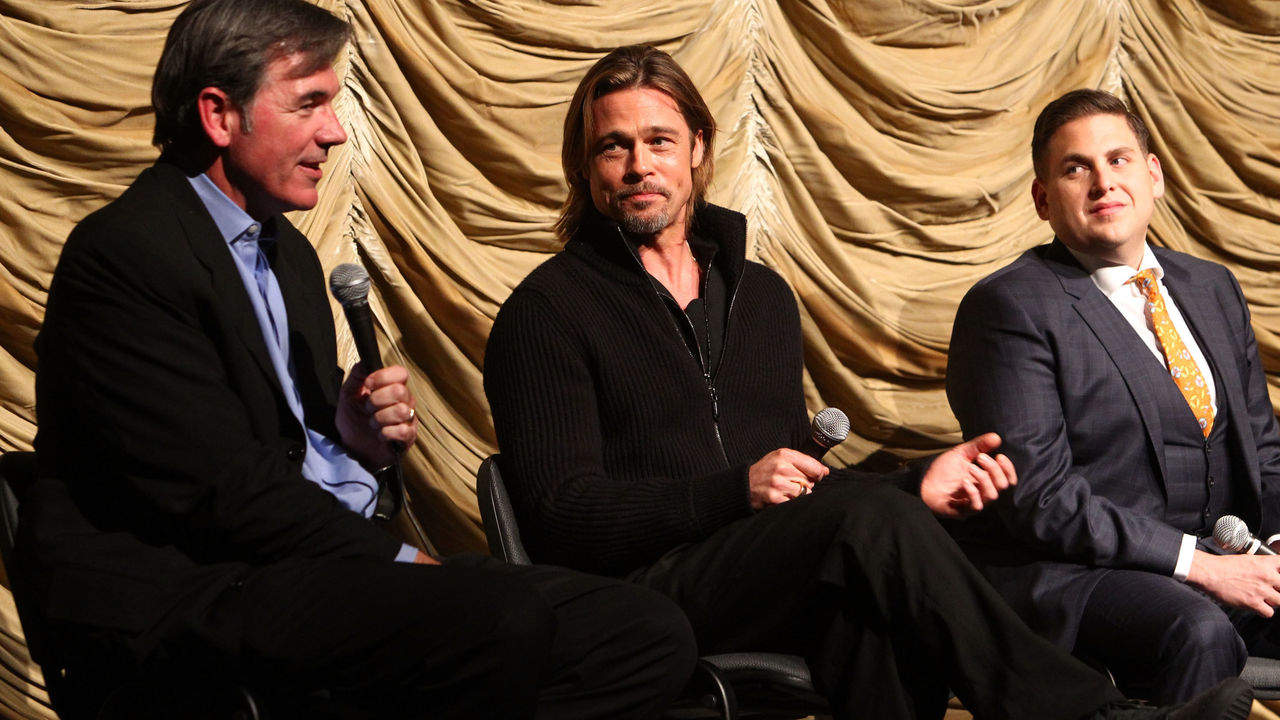
Much of the spirit of "Moneyball" resides in Chapter 2, in which author Michael Lewis depicts scenes from a pre-draft meeting. The book's primary arguments about Beane's new approach were introduced there. That handful of pages changed so much in baseball it created two distinct eras: before "Moneyball" and after. Those pages changed who is selected in the draft, and who does the selecting.
Sig Mejdal, vice president and assistant GM for the Baltimore Orioles, holds the No. 1 pick in Sunday's draft. But in the late spring of 2003, he was studying sleep patterns for NASA when "Moneyball" arrived at his small Sunnyvale, California, apartment shortly after its release. He'd read the excerpt in Sports Illustrated a few weeks earlier and was intrigued.
He opened the book on his couch on an off day and finished it in bed in the early hours of the morning. One passage from the draft room particularly resonated.
"I read the line about how DePodesta was not supposed to be there. That just got me excited," Mejdal recalls.
That passage appears on Page 17:
Paul hadn't played pro ball. Paul was a Harvard graduate. Paul looked and sounded more like a Harvard graduate than a baseball man. Maybe more to the point, Paul shouldn't have even been in the draft room. The draft room was for scouts, not assistant general managers.
"'Holy shit, the A's hired someone like me,'" Mejdal recalls thinking. "And also that I had no imagination to envision someone like myself being in baseball. It was a combination of me kicking myself for not having that imagination but also an excitement that I should have a job by the end of next week, and that was very naive."
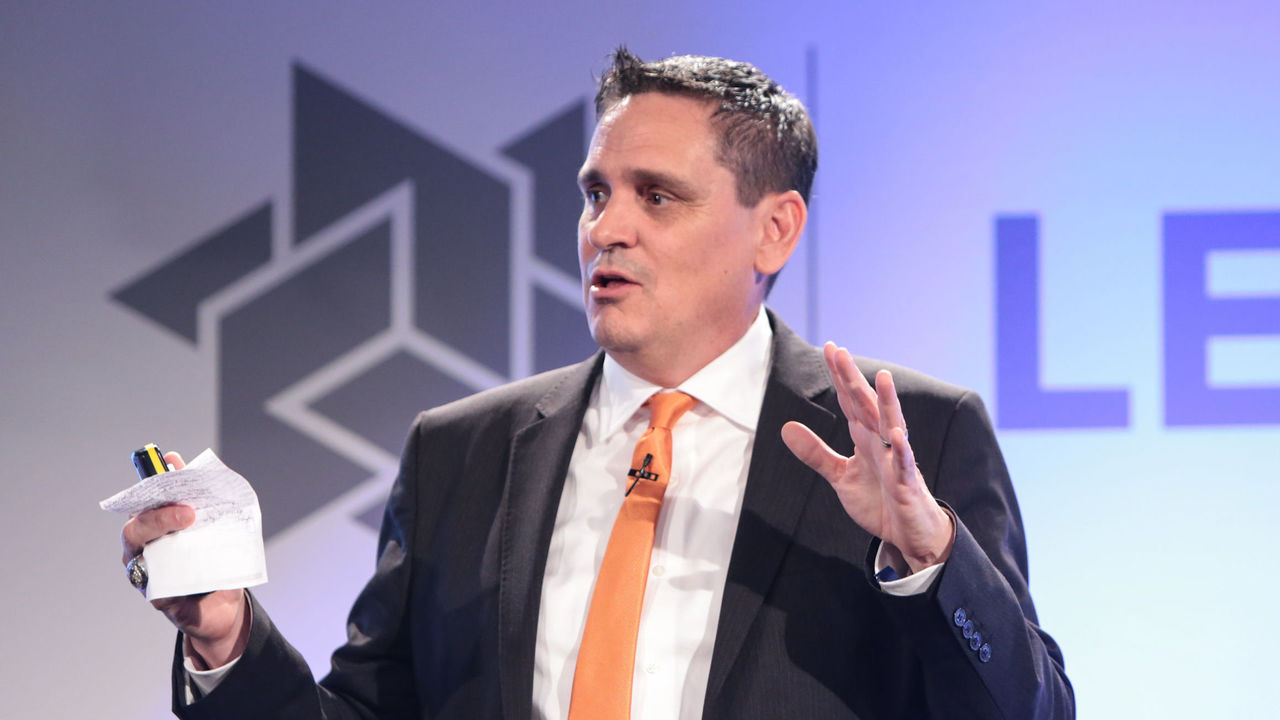
This weekend marks the 20th draft since the paradigm-shifting event chronicled in "Moneyball." But 20 years later, was the 2002 A's draft even effective? What level of influence did its philosophy have on selecting players in the industry? What are its lasting impacts?
We analyzed the last 30 years of draft data from Baseball Reference - focusing on the first 10 rounds where the most effort and dollars are spent - to find out.
When Grady leaned into the phone to take Bonderman, Billy, in a single motion, erupted from his chair, grabbed it and hurled it right through the wall. When the chair hit the wall it didn't bang and clang it exploded. Until they saw the hole Billy had made in it, scouts had assumed the wall was like their futures, solid.
That excerpt on Page 17 recounted the 2001 draft, which Lewis described as an "expensive disaster." It was Grady Fuson's last as scouting director and it set the stage for the 2002 draft experiment.
Beane explained in the second chapter that college players, especially pitchers, were better bets than high schoolers.
The A's final "big board" of top targets featured eight pitchers and 12 position players. All were college players.
The A's drafted seven of them on draft day 2002. "This doesn't happen. Don't think this is normal," Beane said of his good fortune on Page 115.
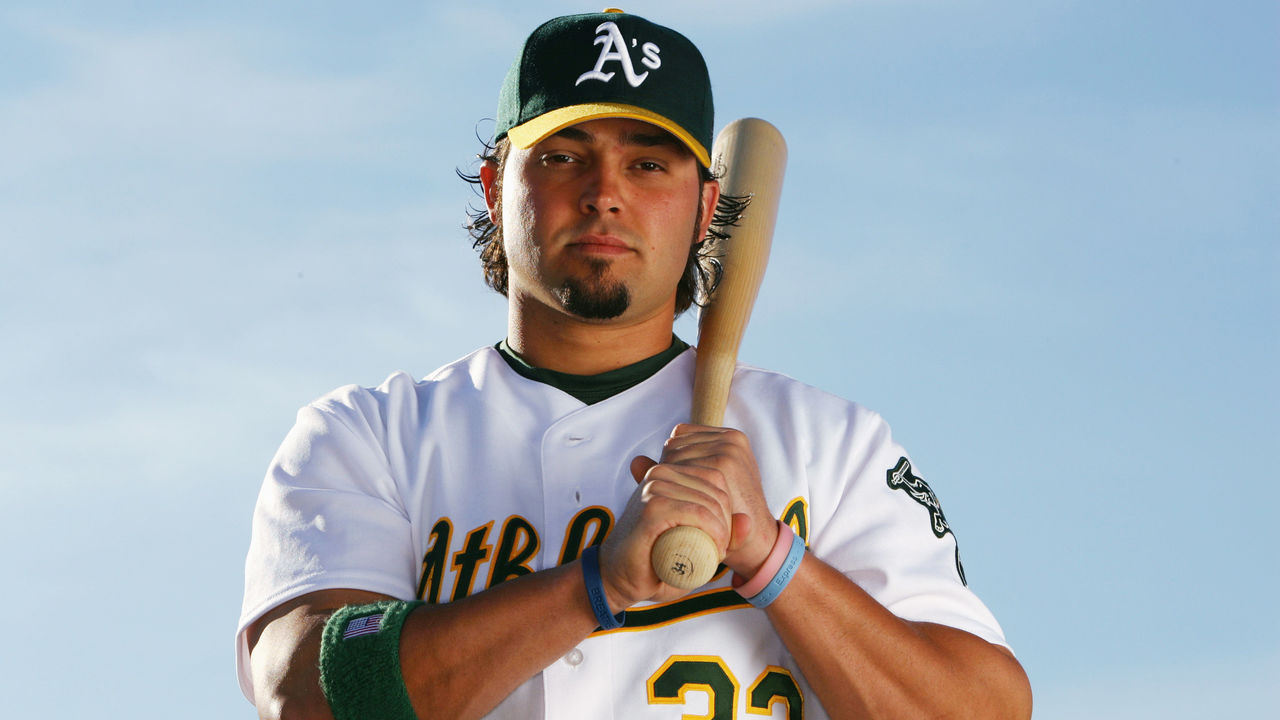
To demonstrate how divergent Oakland's approach was from the rest of the industry, only Blanton (18th), Swisher (34th), and McCurdy (45th) were ranked in Baseball America's top 100 draft prospects. Baseball America's ranking attempts to reflect industry consensus.
What the "Moneyball" draft undoubtedly did was change preferences in the draft.
In the first 10 rounds of the drafts from 1992-2001, there was nearly an even split between college (53.4%) and high school players. But in the nine years after the "Moneyball" draft, the college share of picks rose to 66.7% of the selections in the first 10 rounds.
And since 2012, in the bonus pool era, the college rate jumped to 73.9% in those rounds.
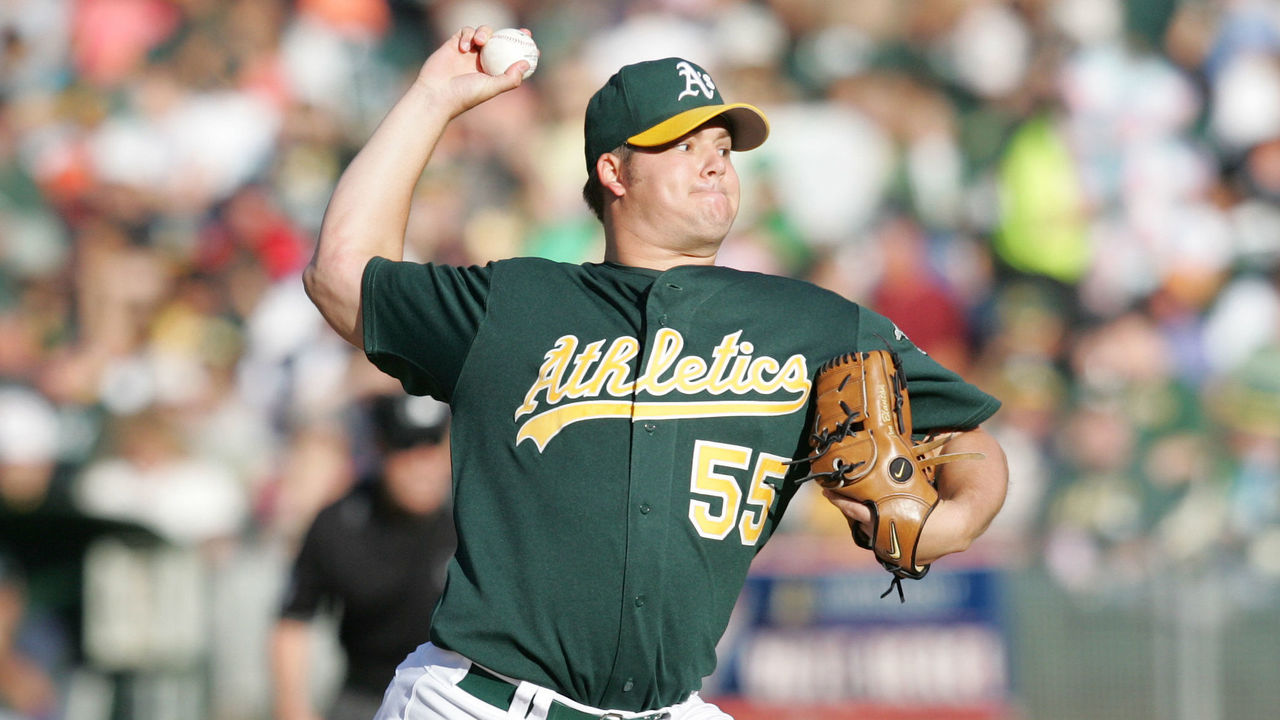
The college lean shows up among the top 50 picks, too. From 1992-2001, less than half (46.4%) were college players. In the 2003-11 drafts, 52.6% were college players, remaining steady (52.4%) from 2012-21.
There are a number of reasons for this pivot.
The CBA changed to include bonus pools to cap spending, but teams manipulated that scheme by signing college seniors to lower-than-slot bonuses because that cohort lacked negotiating leverage. Teams then allocated those pool savings elsewhere in the draft.
With spending capped, more high school players may have decided to take the college route.
But another key reason is that those involved in the draft process changed. The new guard craved data, and there's more data on college players than prep players.
It was Paul's computer that Grady dwelled upon. "What do you need that for?" Grady asked Paul after the meeting, as if he sensed the machine somehow challenged his authority.
"I'm just looking at stats," said Paul. "It's easier than printing them all out."
Mejdal, pitching to be the DePodesta for some other team, never heard back after he emailed baseball executives that summer and fall. He even traveled to the 2003 winter meetings in New Orleans to stalk them in the hotel lobby.
He didn't tell his NASA supervisors why he was taking a trip to Louisiana, but he did tell a couple of trusted colleagues, who failed to "hide their bewilderment," he said.
Job seekers have always traveled to pro baseball's annual convention, but there was a new kind that year - those who'd just read "Moneyball." They'd never played pro baseball but they could navigate an Excel spreadsheet.
Prior to the trip, Mejdal bought a Baseball America handbook for the mugshots and names of baseball executives. And he wasn't above using some help.
"I had cut out their mugshots and placed them on a couple pieces of paper with their names below it," Mejdal said. "There were these young kids right out of college there, too. They were better at this than me. So it was, 'Look, (Walt) Jocketty, over by the elevator!' And they'd all go over there, and I was still looking at my sheet."
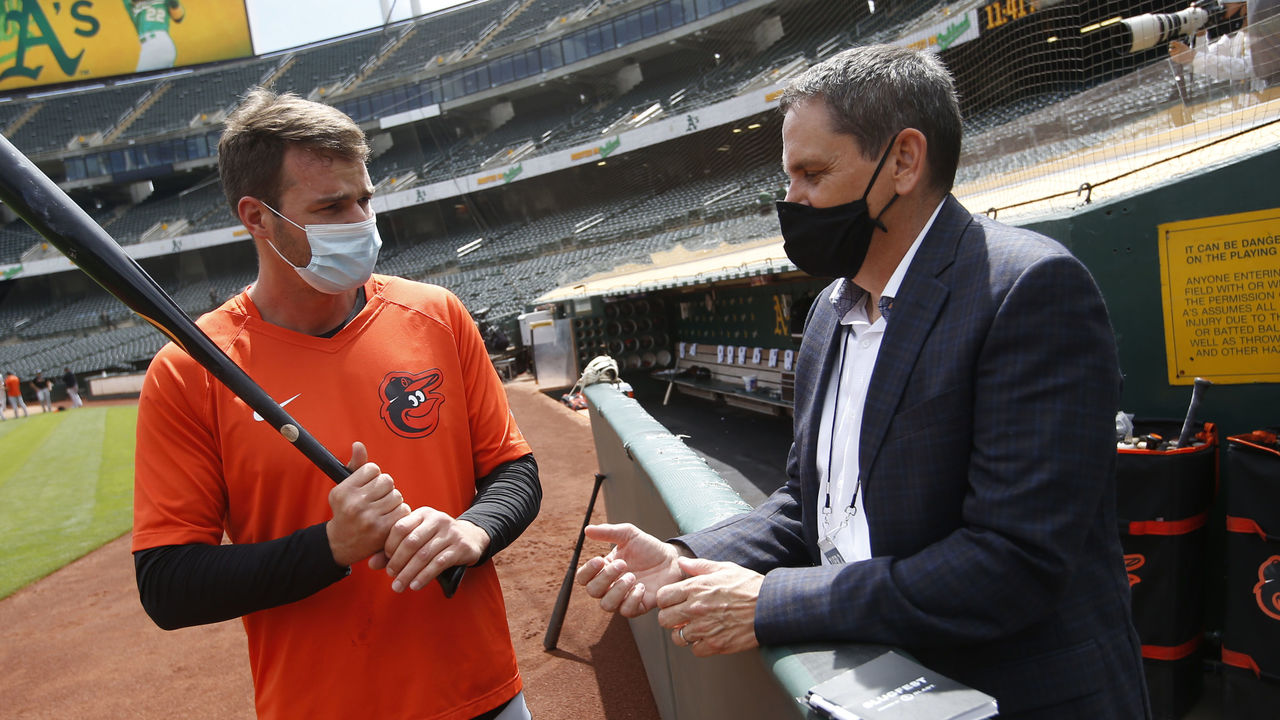
In the same hotel was Chaim Bloom, who slept on the floor of a sportswriter's room. Bloom was then a Baseball Prospectus intern trying to make industry connections. He read the "Moneyball" draft-room scenes with great interest as a Yale undergrad.
"I think this probably would have happened without the book," Bloom, now the Boston Red Sox GM, said. "But I think the book accelerated the acceptance in the industry that we could learn things about players' professional futures from their college performance."
Bloom landed an internship with the San Diego Padres in New Orleans and joined the Tampa Bay Rays at the end of the 2005 season.

Mejdal didn't walk away with a job.
He returned to California and NASA. But he kept pitching teams. One of those pitches was a proposal for a model to help make better draft decisions. It was college-focused. For instance, it was much easier to understand the strength of competition at the college level, and every school kept somewhat uniform stats. That didn't exist for prep players.
Mejdal didn't know who Jeffrey Luhnow was, his mugshot wasn't on Mejdal's sheet in New Orleans. But that's who reached out to him prior to the 2004 winter meetings in Anaheim. They met in the Cardinals' hotel suite.
"'We'll hire you, but not until after a trial period,'" Mejdal recalls of the conversation. "It was, 'Do what you said you would do.'"
He had three months to put together a model to predict the future performance of 2005 draft prospects. He officially became part of the wave of the next DePodestas when the Cardinals hired him full time on Opening Day 2005.
The draft has never been anything but a fucking crapshoot. We take fifty guys and celebrate if two of them make it. In what other business is two out of fifty a success?
Mejdal's first experience in a draft room was in 2005. The scene wasn't unlike the one in the book that propelled him there. There were 20 or so scouts selling jeans, and there was one of him.
"Coming from NASA, where evidence and data drove the day, I was naively expecting the draft decisions to be like that. But it was closer to a free for all, where the scouts were arguing for their players most every round," Mejdal said. "You could see the incentives of an area scout can be misaligned with the team if you don't have a structural, systemic way of capturing their opinions and their expertise.
"I definitely felt like an outsider."
The atmosphere was intimidating, and he wasn't even confident about the first player atop his list: Stanford shortstop Jed Lowrie.
Mejdal traveled weeks earlier to see this statistical wonder play in person. Lowrie posted a .505 on-base mark as a sophomore and a .419 rate as a junior.
"I was pining for Lowrie, who was the No. 1 stat guy in the country, who it turns out was an undersized, baby-faced player. He didn't even look like he belonged at Stanford," Mejdal said. "So you can imagine it was terrifying, horrifying, when I went to see him for the first time. I wanted to see this Paul Bunyan of a second baseman and this undersized guy takes the field. I panicked. I had already quit my job. I imagined getting sent back home when this was the value I was going to add to a team."

The Cardinals hardly used any of Mejdal's recommendations in 2005. They selected Colby Rasmus with their first of four first-rounders, and he was the only one to make a positive WAR contribution in his career (20.2).
Lowrie, taken 45th by the Red Sox, ranks 14th among all 2005 draftees in career WAR (16).
"It's kudos to (Luhnow) that he needed to win the war even if it meant compromising this first battle," Mejdal said.
The Cardinals leaned on Mejdal's model much more in 2006. Their 2006 picks in the first 10 rounds doubled the WAR production of their 2005 draft. The Cardinals ranked just 24th in draft WAR from the first 10 rounds of the 2006-11 drafts, but when Luhnow took over Houston's baseball operations department, he brought Mejdal with him. The Astros ranked second in draft performance from 2012-19. (The Cardinals ranked first.)
So, how does that "Moneyball" draft and the subsequent era stack up?
On one hand, the 2002 A's draft board beat the previous 10 years of performance for the same respective draft slots.
The average WAR of the eight pitchers on Beane's 2002 draft board (5.0) beat the average of the players taken in the same draft slots from 1992-2001 (3.6).
The 12 hitters on Beane's board were better, too: an average of 3.0 WAR to 2.6.
On the other hand, the first 10 rounds of the 2002 draft proved to be the best over the last 30 years to date, producing a total of 751 WAR. Only the 2005 draft (712 WAR) comes close, though more recent drafts have plenty of current and future major leaguers yet to accumulate production.
By focusing only on college players, the A's didn't rank Zack Greinke (74.8 career WAR) and passed on Cole Hamels (59) and Matt Cain (29.1), who outperformed Swisher (21.5).
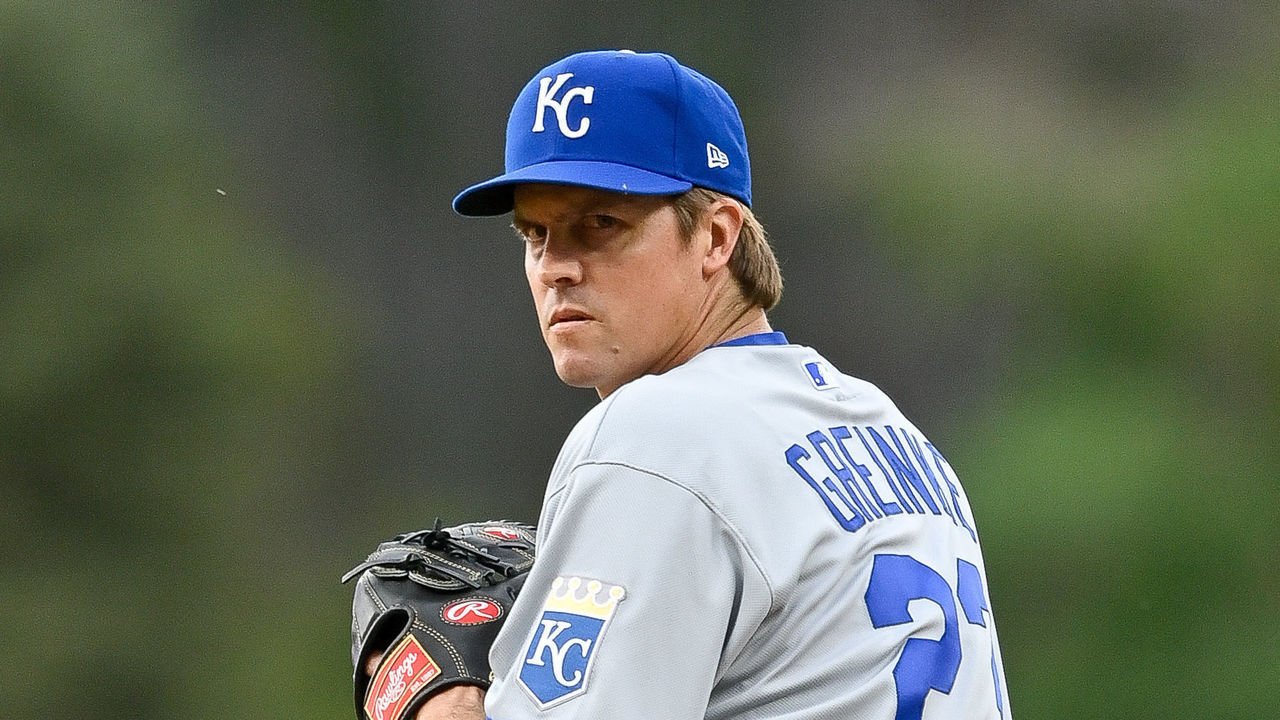
The A's 2002 draft as a whole finished ninth out of 30 MLB teams (41.7 WAR) from the first 10 rounds, though they had a then-record number of first-rounders (seven among the 30 standard and 11 supplemental picks).
"'Moneyball' was many things, but when it came to revolutionizing the draft, it mostly missed the mark," Baseball America's J.J. Cooper recently wrote in a column about the 2002 draft.
It was a mixed bag, but a dramatic improvement from the first 10 rounds of the A's drafts in 2000 (minus-1.8 combined WAR) and 2001 (17.9 WAR), but not as bountiful as their 1997 (56.9), 1998 (37.5), and 1999 (42.4) drafts.
Those 1997-99 draft classes were led by college arms.
The 1997 draft produced Tim Hudson (57.9 career WAR), a sixth-rounder out of Auburn. Beane was named GM after that season. The 1998 draft was headlined by second overall pick Mark Mulder (20 WAR) out of Michigan State. And in the 1999 draft, the A's spent their first rounder on Barry Zito (31.9 WAR), a pitcher with an 88-mph fastball - but a tear-drop curveball - who Beane championed out of USC. (Those star pitchers weren't featured in the movie or the book.)
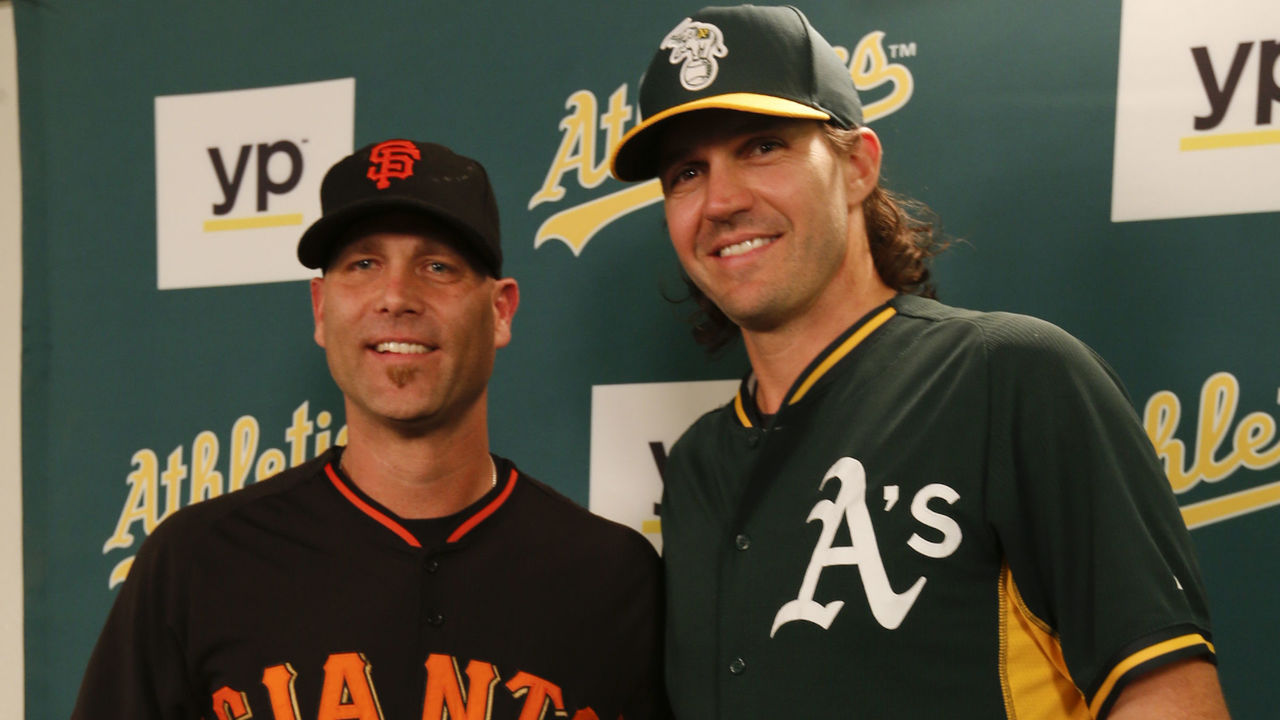
Since the "Moneyball" draft, Oakland ranks sixth in baseball in WAR produced from the first 10 rounds of the draft (281.5 WAR), trailing only Boston (383.5), Arizona (335.4), Atlanta (320.8), Anaheim (303.8), and Houston (303.8).
Since 2002, only the San Francisco Giants (82.9%) and Detroit Tigers (82.5%), have drafted a greater share of college players than the A's (81.9%) in the rounds studied.
So, are college arms the way to go? Has the central tenet of "Moneyball" been proven correct?
Well, not exactly. What's worked well for the A's hasn't worked everywhere. And analysis of draft prospects has changed a lot in the last 20 years as data exploration has exploded.
In the first 10 rounds since 2002, high school pitchers have produced more WAR per signed draftee (1.72 WAR) than four-year college (0.92 WAR) and junior college products (0.63 WAR). High school position players outperformed (1.7 career WAR) college players (1.39)
In the first round since 2002, high school arms enjoy a slight edge over college pitchers (4.33 average WAR to 4.21). Among position players, college first-rounders hold a 4.7 to 4.1 WAR edge.
With prep players outperforming college peers in general, and in an era where teams have spent so much time and resources on player development, shouldn't teams want younger prospects who they'll have more time to develop? There's more data on prep stars today, too, from exit velocities to breaking-ball spin captured at showcase events.
"Recent years have, or should have, beaten into all of us a great deal of humility in terms of thinking we know what is possible with a player," Bloom said. "I think every year we find more and more players that might be able to reach ceilings that we didn't know there might be. There are different paths to reach those ceilings than we would have thought possible 15-20 years ago, and that's true of high school and college players."
Mejdal suggests perhaps the college route is becoming more enticing for prep players weighing relatively modest bonuses versus, say, a scholarship to Stanford.
But as for overall improved draft processes, that is showing up.
In the 10 drafts prior to "Moneyball," the first 10 rounds produced 18.1 career WAR per team. In the 10 drafts since, which include active players, the first 10 rounds have averaged 19.7 WAR per team.
Mejdal believes the draft process is undoubtedly better, more efficient, and less biased now.
"This information, the added predictive ability, almost all the teams are using it. The industry as a whole has gotten better," Mejdal said. "I remember in St. Louis, late in the draft, and after the draft, there were still players available that I loved. That is no longer the case. It's a crowded buffet table now."

Ironically, it's another group, the scouts derided in "Moneyball," who've enjoyed new importance since those draft-room scenes were published, Bloom said.
"The thoroughness of the scouting staff only matters more as time goes on because the margins are smaller and everyone has a lot of information," Bloom said. "So if you are missing a key piece of information, or your competition has, or if you can find something they don't, you have an even greater chance to separate yourself now than you used to because the information is so widespread.
"What those advantages are changes over time. The search for those edges never ends."
The draft beliefs espoused in "Moneyball" were also snapshots in time. Information and best practices evolve. But there were timeless lessons found in those pages documenting the 2002 A's draft: eliminating biases, testing convention, and accepting new information with which to make decisions.
The Orioles today don't use magnets to arrange the board in their draft room like Beane did 20 years ago. That's a backup system now. And who knows, the Orioles might even draft a high school player No. 1 after drafting college players in the first three years under GM Mike Elias and Mejdal. Four of the top five prospects are prep stars, according to Baseball America's rankings.
"When we improve our organization, it's at the cost of another organization's wins, but what isn't zero sum is having a system that's more just and can better identify the players that truly have the best chance of making it regardless of their school, or what they look like," Mejdal said. "And to me that makes it a slightly better world. I think it's akin to having front-office persons that haven't played baseball now having the opportunity to be in the front office. It's the same story."
Travis Sawchik is theScore's senior baseball writer.
HEADLINES
- Cubs demote slumping Shaw to Triple-A
- Sharks' Couture officially retires: NHL was 'everything' I thought it'd be
- Top Shelf: Handing out awards for top goon, best defensive D-man, more
- Judge downplays Soto's protection comment: 'He's going to be just fine'
- NBA set 2nd-highest regular-season attendance mark in 2024-25